Little Bunting
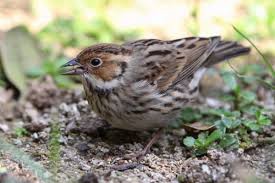
- 16 Dec 2024
In News:
Little Bunting recently spotted in Mount Abu, Rajasthan, a sighting previously unseen in the region.
About the Little Bunting:
- Scientific Name: Emberiza pusilla
- Family: Bunting family (Emberizidae)
- IUCN Red List Status: Least Concern
Distribution:
- Breeding Range: Far northeast Europe and northern Eurosiberia to the Russian Far East (taiga region).
- Migratory Pattern: Migrates to the subtropics during winter, with sightings in northern India, southern China, and northern Southeast Asia.
Physical Features:
- Size: Small bird, measuring 12–14 cm (4.7–5.5 inches).
- Coloration:
- White underparts with dark streaking on the breast and sides.
- Chestnut face with a white malar stripe, black crown stripes, and a white eye-ring.
- Fine dark border behind chestnut cheeks.
- Similarity: Resembles a small female reed bunting but with distinct black crown stripes.
Call and Song:
- Call: Distinctive "zik".
- Song: A rolling "siroo-sir-sir-siroo".
Habitat and Behavior:
- Typically found in agricultural areas, feeding on grains.
- Migration: Avoids extreme cold conditions, possibly due to climate change influencing its movement into Rajasthan.
Recent Sightings in India: Spotted in Gurugram, Chandigarh, northern Punjab, and now Rajasthan.
Conservation Significance: The sighting underscores the need to preserve forest areas and wetlands for migratory species like the Little Bunting.
Search and Rescue Aid Tool (SARAT)
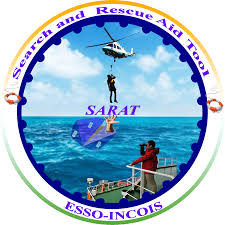
- 16 Dec 2024
In News:
The Indian National Centre for Ocean Information Services (INCOIS), under the Ministry of Earth Sciences, has developed SARAT Version 2 to aid Indian Search and Rescue (SAR) agencies like the Indian Coast Guard.
Key Highlights:
Purpose: SARAT is designed to assist in locating missing objects or individuals at sea by simulating the probable search area, considering factors like wind, currents, and waves.
Improvements in Version 2:
- The search area now starts from the last known position of the object, improving the accuracy of the search.
- Enhanced visualizations for better judgment of probable search areas, including colour coding of regions and markers to identify the last known position.
- Optimized search: Reduces the vast search area to a few high-probability regions, allowing for better utilization of limited search resources.
Technical Aspects:
- The tool uses model currents from the Regional Ocean Modelling System run on high-performance computers at INCOIS.
- It accounts for uncertainties in the initial location and the last known time of the missing object using model ensembling.
- Users can select from 60 types of missing objects based on shape and buoyancy.
Interactive Map & Multi-language Support:
- Results are shown on an interactive map, providing the probable search area.
- The tool also sends results as text messages to emails and mobile phones in languages of coastal states, enabling local fishermen to use it effectively during distress situations.
Launched in 2016, Updated in 2024: SARAT was launched in 2016 and the updated version (SARAT Version 2) has been designed with feedback from the Indian Coast Guard and other stakeholders involved in marine search operations.
Access: The updated SARAT Version 2 can be accessed at: https://sarat.incois.gov.in/sarat/home.jsp.
African Swine Fever
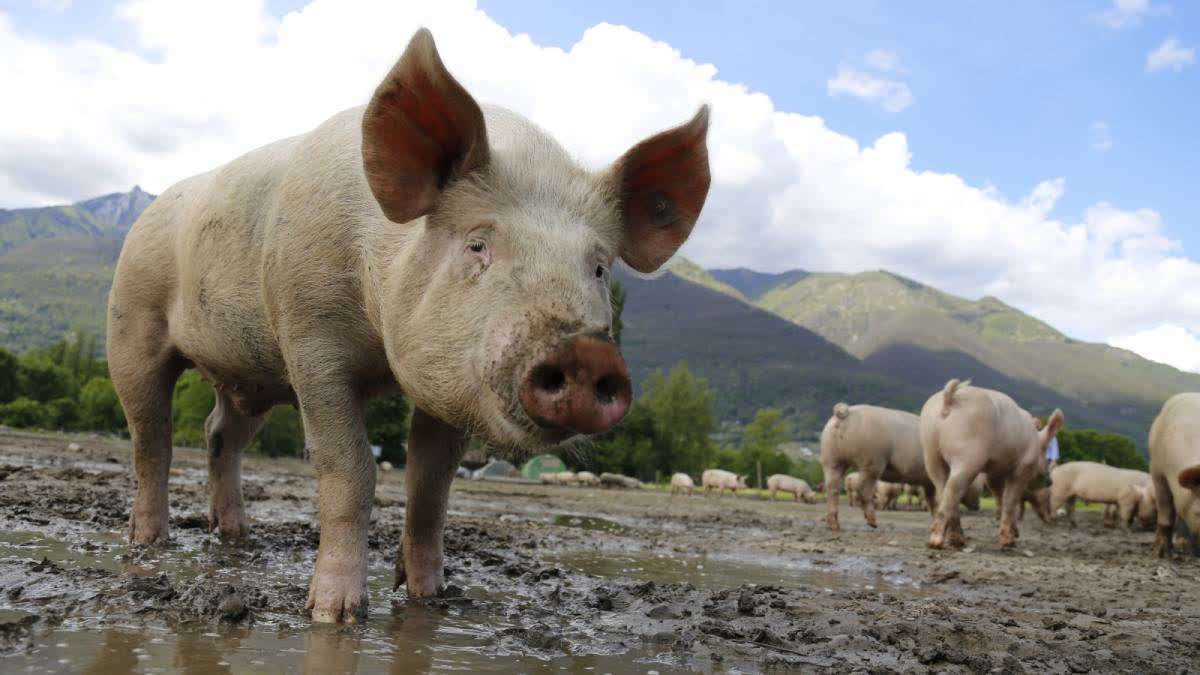
- 16 Dec 2024
In News:
African Swine Fever has been reported at two pig farms in Koottickal and Vazhoor grama panchayats in Kottayam district.
Action Taken:
- Culling of Pigs: All pigs in the affected farms and within a 1 km radius will be culled and disposed of according to Central Government guidelines.
- Infected Zone: A 1 km radius around the affected farms has been declared an infected zone.
- Surveillance Zone: A 10 km radius around the infected area has been designated a surveillance zone.
About African Swine Fever (ASF)
- African swine fever (ASF) is a highly contagious and hemorrhagic viral disease of domestic and wild pigs. It is a notifiable disease and its outbreak should be immediately reported to the higher authorities.
- ASF causes destructive effect on piggery due to high morbidity and mortality (up to 90-100 %). In India it was first confirmed in Arunachal Pradesh and Assam in February-March 2020.
- Currently, there is no effective vaccine available against ASF, so prevention by adopting strict biosecurity measures is the only way to prevent ASF.
CLINICAL SIGNS
- High fever (106-1080 F), lethargy and loss of appetite
- Increased respiration rate
- Blue-purple discoloration of skin of ears, abdomen and rear legs
- Discharge from the eyes and nose; bloody froth from the nose/mouth
- Constipation or bloody diarrhea
- Abortion
- Death of pigs in 6-15 days
Diagnosis: Confirmatory diagnosis in gov. laboratories
Zakir Hussain
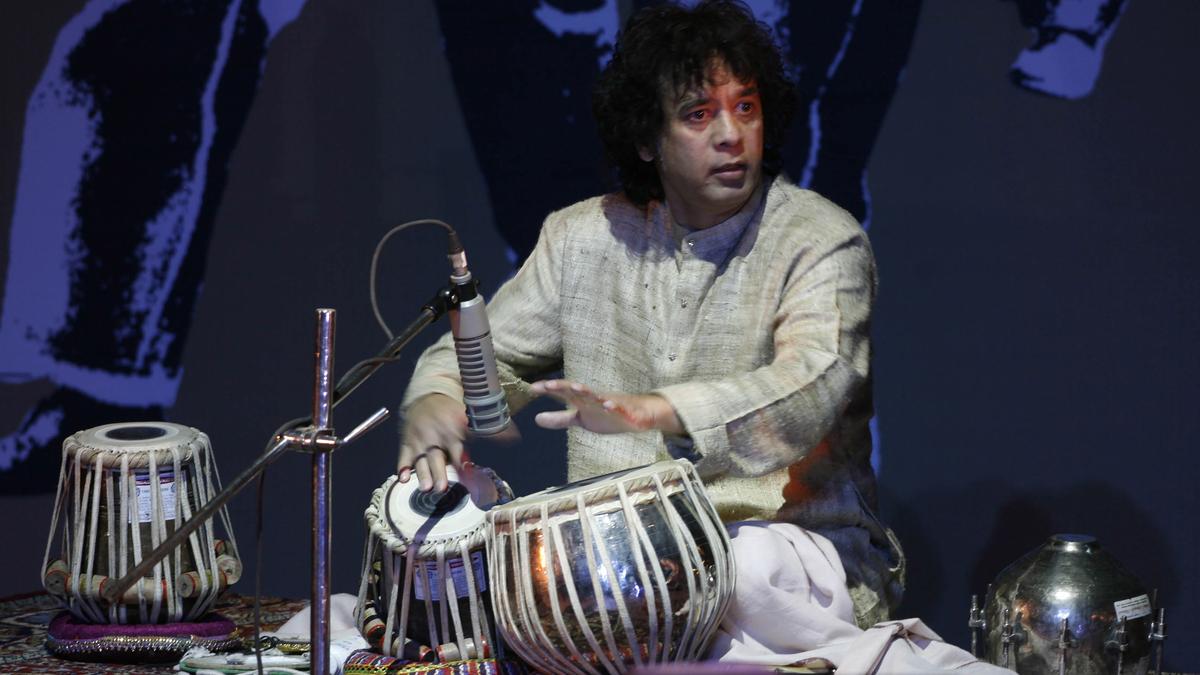
- 16 Dec 2024
In News:
Ustad Zakir Hussain, the legendary tabla virtuoso, passed away at the age of 73 due to Idiopathic Pulmonary Fibrosis (IPF).
Key Highlights:
- Career Highlights:
- Born on March 9, 1951, to Ustad Alla Rakha, a renowned tabla maestro.
- Began tabla training at age 7, with early guidance from his father.
- Co-founded Shakti in 1973 with John McLaughlin, blending Indian classical music with Western influences, pioneering world music.
- Worked with global artists, including George Harrison, John McLaughlin, and Mickey Hart.
- Awarded four Grammy Awards, including three at the 66th Grammy Awards (2024), and honored with the Padma Vibhushan in 2023.
- A visiting professor at Stanford and Princeton universities.
- Musical Style:
- Transformed the tabla from a background instrument into a dynamic, expressive solo performance.
- Known for his complex rhythms and spontaneous performances, making tabla accessible and glamorous.
- Emphasized the concept of "hazri" (attendance) in the court of music, seeing his music as an offering to a higher power.
- Cultural Influence:
- His music was a bridge between traditional Indian classical and contemporary global sounds, impacting audiences worldwide.
- Played a pivotal role in the cultural exchange of Indian classical music, gaining fans and respect across the globe.
- Participated in projects such as the Taj Mahal tea commercials and "Desh Raag", symbolizing unity and diversity in India.
What is Idiopathic Pulmonary Fibrosis (IPF)?
- IPF is a chronic lung disease causing scarring of the lung tissue, leading to difficulty in breathing.
- Cause: The exact cause is unknown, hence termed "idiopathic" (unexplained).
- Risk Factors: Most common in older adults (over 50), men, and those with a history of smoking or viral infections.
About the Tabla:
- Structure: Composed of two drums—Tabla (right) and Bayan (left)—used primarily in Hindustani classical music.
- Material: Tabla has a wooden body, while Bayan can be made of clay or metal, both covered with animal skin and syahi paste.
- Role: Primarily accompanies vocal and instrumental performances, and is essential in various classical dance forms in northern India.
- Historical Note: Believed to have been invented by Amir Khusrau.
Prominent Tabla Players:
- Ustad Alla Rakha (father of Zakir Hussain).
- Zakir Hussain (himself).
- Shafat Ahmed and Samta Prasad.
India Maritime Heritage Conclave 2024
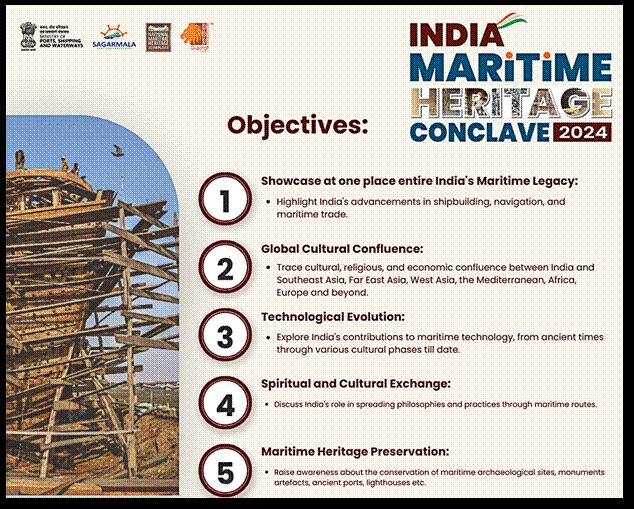
- 16 Dec 2024
In News:
The 1st India Maritime Heritage Conclave (IMHC 2024), a landmark event organized by the Ministry of Ports, Shipping and Waterways (MoPSW) was recently held.
Key Highlights:
Event Overview:
- Organized by the Ministry of Ports, Shipping, and Waterways (MoPSW), held on December 11-12, 2024.
- Theme: "Towards Understanding India's Position in Global Maritime History."
- Celebrated India’s maritime legacy and future vision as a maritime powerhouse.
India’s Maritime Heritage:
- Deeply rooted in ancient traditions; references in Rig Veda, mythology, literature, and archaeology.
- Modern India boasts a 7,500 km coastline, 13 major ports, 200 non-major ports, handling 95% of trade by volume and 70% by value.
- Ports handle 1,200 million tonnes of cargo annually, vital for economic growth.
Key Features of IMHC 2024:
- International Participation: Dignitaries from 11 countries, including Greece, Italy, UK.
- Exhibition: Showcased ancient shipbuilding techniques, navigation systems, historical trade routes.
- Cultural Program: Celebrated coastal traditions with performances and festivities.
- Key Focus: Sustainable maritime innovation, skill development, youth engagement, and cultural preservation.
National Maritime Heritage Complex (NMHC):
- Location: Lothal, Gujarat – an ancient Harappan site (2600 BCE).
- Significance: Home to the world’s oldest dry-dock (2400 BCE).
- Future Vision: NMHC to showcase maritime history with 14 galleries, open aquatic gallery, lighthouses, and a research institute.
Modern Maritime Significance:
- India’s Global Maritime Ranking: 16th largest globally, 3rd largest in ship recycling.
- Trade Backbone: 95% of India's trade by volume, 70% by value handled by maritime sector.
- Port Performance: India ranks 22nd in the World Bank’s Logistics Performance Index (2023).
Future Maritime Vision:
- Sustainable Blue Economy: Emphasis on eco-friendly practices, green shipping, and maritime tourism.
- Skill Development: Training programs to empower local communities and boost maritime workforce.
- Infrastructure Development: Upgrading ports and shipping infrastructure under the Sagar Mala Program.
- Policy Framework: Integrated policies for maritime heritage preservation and economic development.
Notable Initiatives:
- Maritime India Vision 2030: Focus on increasing maritime capacity and sustainability.
- SAGAR: Security and Growth for All in the Region initiative.
- Ship Repair & Recycling Mission: Promote India as a global leader in ship recycling.
- Green Hydrogen Hubs: Development of eco-friendly maritime infrastructure.
